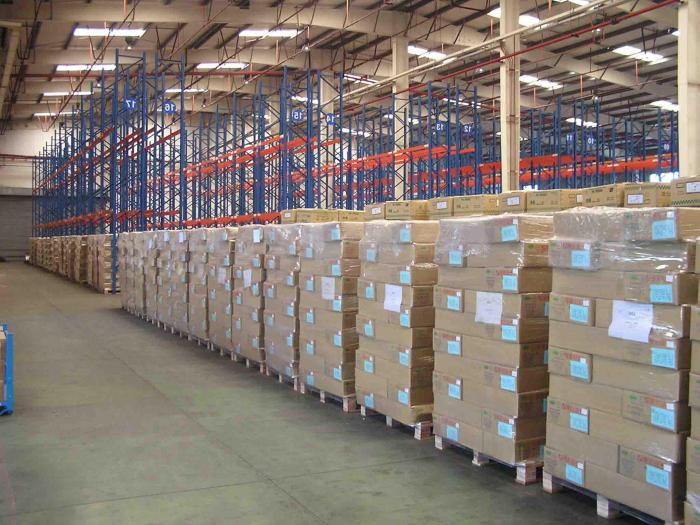Unified form T-1
The current legislation of the Russian Federation provides for a number ofdocuments intended for the movement of materials, goods, negotiable and non-current assets from the supplier to the buyer. They are applied depending on the method of delivery, the terms of the contract and the features of the form of accounting used by contractors. An obligatory condition for the effectiveness of the entire process is the availability of correctly completed unified documents.
Legislative case

For the purposes of accounting, warehouse, and most importantly -tax accounting for the transfer of goods and materials by business entities is used a waybill (form T 1). This primary document is used for the delivery of products (goods, materials, etc.) by road. Legislatively unified form T 1 is fixed by the Decree of the Government of the Russian Federation No. 272 of 15.04.2011. Until now, the TTN in the form of TORG-12 has not been canceled, so at the moment the documents are applied in parallel, which causes a lot of disputes and litigation between the tax authorities and the enterprises that conduct the relevant activities. On the basis of a sufficiently large judicial practice, we can draw the following conclusion: the form T1 applied from 2011 is a confirmation for the buyer of the received amount of VAT to be reimbursed. If the organization is exempt from this type of tax, then for TORG-12 it is possible to apply TORG-12 for tax and accounting. It is not a confirmation of the delivery services provided by the transport company. The choice of the applied form remains for the business entity and its counterpart, and it is important to take into account the interests of both parties.
Using TTN

Form TTN
A consignment note (Form 1) consists offrom two parts (sections). The first contains information on material values that are to be delivered to the buyer. This section is called the "Consignment Note" and serves to reflect information about the cargo, information about the consignor and the consignee. The second part is the transport section, contains the information necessary for settlements with the transport company that provides the delivery services. If one of the parties to the contractual relationship has its own vehicle fleet and carries out transportation on its own, the second section of the TTN serves to confirm the amount of shipping costs. Both sections of the document are filled in 4 copies. The first document is transferred to the supplier of goods and materials, the second goes along with the cargo to the buyer, the third and fourth remain with the transport company after the consignee notes about the delivery of the goods. On the basis of the TTN signed by the buyer and the way-list, the driver is charged. The fourth copy of the TTN with the notes on the delivery of the goods and the time of their receipt is sent to the organization that pays for transportation services.
Filling in a waybill

Waybill
The delivery note (Form T 1) is filled in by the supplier organization after the arrival of the machine in the following positions:
- the name of the transport enterprise;
- the number of the way-sheet drawn on the machine, which delivers the goods to the buyer, and his date;
- information on motor transport (brand, state number);
- surname and initials of the driver responsible for the transportation process;
- the name of the documents accompanying the goods (certificates, invoices, for further transportation by other modes of transport - invoices, quality certificates, if necessary, etc.);
- types of packaging used to package the goods, or put a mark b / t, the number of seats, the weight of one unit of goods in the package and the total weight of the goods.
In the columns, the completion of which is not necessary forof this type of cargo, a dash is placed. All information is confirmed by the signature of the storekeeper (material responsible person) who shipped the goods, and the seal of the supplier's organization. The cargo is taken under its responsibility by the driver or freight forwarder of the transport company, who must sign his accepted amount. If the car body is sealed in order to prevent theft, then the document should be placed seal impression.

Delivery of goods to the buyer
After the car arrives atpurchasing organization and reconciliation of all initial data (the availability of a full package of documents, the integrity of the seal), goods are unloaded, in the process of which reconciliation with data reflected in the documents of the supplier. In accordance with the actual and prescribed availability of the goods, the buyer (the materially responsible person) signs the document and certifies with the seal of the organization. The transport section specifies the date and time of arrival of the goods at the buyer's address. This is especially important when transporting perishable goods. If there are claims from the side of the receiver to the qualitative characteristics of the goods, the seller, on the basis of the specified delivery time, can shift responsibility to the organization that carried out the transportation. Two copies of the completed, certified by the appropriate seals and signatures of the TTN are transferred to the driver of the transport organization, one package of documents remains with the buyer as the basis for registration of accepted goods and tax purposes.
Waybill

Reflection in accounting

For a supplier of goods and materials, a commodity invoicein the form of T1 serves as the basis for the delivery of finished products to the buyer from the warehouse of the company D 62.76, K 41, 43, 45. The buyer organization on the basis of the received documents makes the following accounting correspondence of accounts: D 10, 19, K 60, 76. Transport services conducted on the registers after the payer receives the documents, depending on the accounting policy, the amount of costs increases the corresponding positions: D 29, 20, 23, 25, 44 K 76, 60.
</ p>



